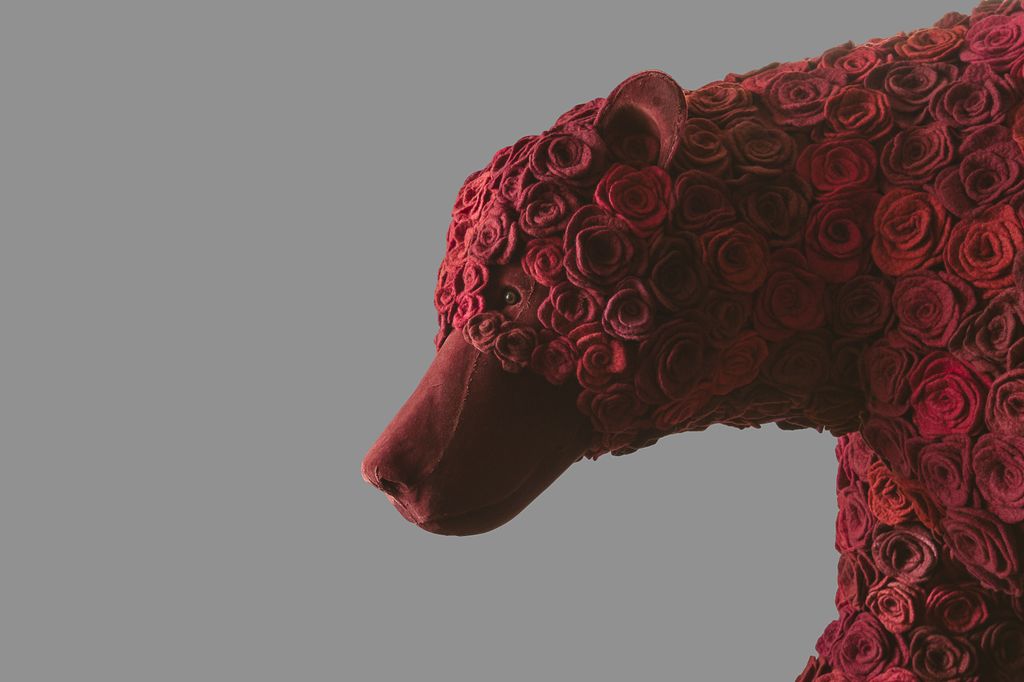SKIN

As published in our coveted member’s magazine, Journal, in the spring/summer 2012 edition.
Volunteers have power, and this exhibition, Skin: the seduction of surface, is the direct result of volunteer activism. A few years ago I gave a vault tour to a group of Young Patrons Circle members, a group of motivated young professionals with the good sense to think that the Gallery is the kind of place to which they should devote their time and talents in their precious off-hours. During the tour I pulled out a few choice paintings and spoke briefly about them, about our collection mandate as well as our exhibition mandate to build shows from the Permanent Collection. In that conversation I mentioned that one of the works had been part of an imagined exhibition titled Skin: the seduction of surface, which had been put together, on paper, my first year on the job, but which never saw the light of day.
This show needs to be mounted. This is the kind of show I’d like to see, and the kind of show The [Young Patrons’ ] Circle should get behind. – Bessy Nikolaou
Now, exhibitions can get pulled from the schedule for many reasons, and for one of those many reasons, this exhibition didn’t make it out of the vaults and onto the floor. However, one of the volunteers on that tour, Bessy Nikolaou, was insistent: this show needed to be mounted. In my memory she said something like, “this is the kind of show I’d like to see, and the kind of show The Circle should get behind.” She managed to convince me that the exhibition was worth revisiting and did so with a level of pragmatic passion that I began to see the exhibition in a new way. With the support of the Circle members I felt new air breathed into the project. I am indebted to them for this.

Jana Sterbak Vanitas: Flesh Dress for an Albino Anorectic, 1987, Sculpture.
Revisiting the project meant I took a fresh look at the works on my first list and realized that the notion of skin, with its many meanings and subtexts, had wider-ranging opportunities. The works included in the exhibition opening May 18 are drawn from the Permanent Collection of the Art Gallery of Nova Scotia as well as from private and public collections. The exhibition will also feature works by a number of artists invited to participate in the exhibition.

Jana Sterbak Vanitas: Flesh Dress for an Albino Anorectic, 1987, Sculpture.
Jana Sterbak’s Vanitas: Flesh Dress for an Albino Anorectic is a profoundly moving artwork. Sewn together from 50 pounds of raw flank steak, this “meat dress” hangs on a dress form. The raw meat is heavily salted and, over the course of the exhibition, cures and dries out. This process alters the appearance of the meat, going from bright red, bloody, slick and shiny on the first day of the exhibition, to brown, brittle, and even gray at its end. The salting process ensures its preservation, but not its freshness. I am fascinated by the obvious inferences one can draw from this work- the flesh laid bare, we are all consumable. Sterbak’s work reveals much about the tensions in society and, as the dress is made for a female form, it speaks loudly of the precarious place women continue to hold in society. We may have come a long way, baby, but we’re still meat on a hook. The beauty of such a naked (if you will) work is that it repels as it compels.
Maloney’s Skin hangs as a skin shed, a remnant of a body no longer present.
Sarah Maloney’s take on skin has been in the works for the past ten years. Maloney has painstakingly stitched hundreds of thousands of beads together to form a human-scaled skin. Breasts, bum, fingers and toes are all there, in shiny glass and thread. In its creation, the work is a powerful metaphor of the body’s work during pregnancy. Maloney’s assemblage of the individual beads evokes the cellular structure, the formation of body, and protective covering. This skin could be armour, it could be protective but it has no give, no way of being donned. Limp, impenetrable, her beaded skin provides a pithy foil to Sterbak’s flayed flesh dress. Maloney’s Skin hangs as a skin shed, a remnant of a body no longer present.

Sarah Maloney, Skin (detail), 2011, glass beads and thread, collection of the artist
Emily Falencki’s memorial portraits of missing persons give voice to grief and question society’s all-too-hard shell. Felencki finds her source material in newspapers, on the internet or on posters around her neighborhood. The images are so often repeated they can become invisible to those who would see them. Using traditional (read time consuming) painting techniques including layers of rabbit skin glue and hand sanding, Falencki commits to giving meaning to those faces, painting their likeness, and demanding attention for those less close and far from home.

Janice Wright Cheney, Widow (walking), 2012, wool, cochineal dye, velvet, taxidermy form, pins and wood, the artist gratefully acknowledges the support of the New Brunswick Arts Board, photo: Jeff Crawford Fiorillo, Halifax/Hamilton
Works in this show will allow discussion about race, gender, sensuality, fragility and strength. Written, decorative or disfiguring elements such as tattoos, makeup or scars feature on human, animal and abstracted skins. Land and sea have their own skin and are interpreted by artists herein. The surface begs to be scratched, and I invite you to join in.
Sarah Fillmore, Chief Curator

